If you’ve been curious about Flodesk email marketing for wedding pros but also feel overwhelmed by adding “one more thing” to your marketing stack, this episode is my best case for why it’s worth your time plus how to make it lighter, easier, and more effective than you think.
I’ll share the real reason I resisted email for years, what finally convinced me to commit, the metrics that actually matter, and why Flodesk is my favorite platform for service-based creatives.
Before we dive in, a quick note on timing: Flodesk is changing its pricing structure soon. If you’ve been considering it, this is a smart moment to decide what platform you’ll use and lock in a plan before the change. I’ll add details and the latest dates in the show notes and at the end of this post.
🎧Listen to this episode on Spotify or Apple Podcasts or play it directly below.
Why email still works for wedding pros
I’m a social-first girl at heart, and I don’t love getting emails from e-commerce brands. But I love the emails I get from service providers because the connection feels more human. That’s the energy we want to create for couples and creative clients—closer, calmer, and more personal than a social scroll.
A few reasons email still matters:
- You own it. You don’t own your Instagram account, your reach, or your rank on Google. You do own your domain and your list.
- It cuts through algorithm drama. When social access gets buggy or reach is inconsistent, your list is a stable bridge to your audience.
- It nurtures buyers. The couples who inquire after reading your emails usually feel “warmed up” to your process, pricing, and personality.
For context, my list is ~1,500 subscribers with an average open rate around 44.7%. That’s hundreds of people reading every week—consistently. Your list doesn’t have to be huge to be high-impact.
“But my clients don’t like email.” Let’s bust that.
Some people don’t like email. Some don’t like social. Many are happily opening the right kind of emails: the useful, skimmable, story-rich, value-forward ones.
For wedding pros especially, your list lifecycle can be short and seasonal—but you can design a strategy that:
- Brings the right people in early through helpful opt-ins
- Nurtures them while they research
- Converts them when their timing and budget align
- Keeps them engaged after the wedding so they become referrers and repeat clients for future celebrations
The biggest advantage: email sets you apart
Plenty of service providers still aren’t using email marketing. If you are, you’ve instantly created another path for people to get to know you without a four-figure commitment. In a premium market, that “low-lift” relationship channel is powerful.
Smart opt-ins help here:
- Budget calculator that shows realistic ranges and trade-offs
- Venue comparison checklist that highlights what really matters
- “Which planning style fits you?” quiz that guides decisions without turning into full DIY
Keep freebies strategic. They should clarify the complexity of your work and show the value of hiring you—not replace your role.
What to write about when you feel stuck
- Start with one story from a recent wedding. Explain the challenge, what you did, and the outcome.
- Offer one takeaway the reader can use today.
- Rotate through three angles week to week: teach something, show something, sell something.
- When you teach, give one clear step. When you show, link to a gallery, blog, or reel. When you sell, keep it gentle and specific with one next step.
A simple welcome sequence that warms people up
- Email 1: A friendly hello, what to expect, and one resource that helps today.
- Email 2: Your process at a glance and how to get on your calendar.
- Email 3: A story from a real event and the transformation you delivered.
- Email 4: Common objections with calm answers and a soft CTA to inquire.
- Email 5: A value add like a mini guide or checklist and a final invite to book a call.
Keep each email short. Add one clear button. Link pricing or services at the footer.
Lead magnet ideas that attract the right couples
- Planners: A timeline sanity check for six, nine, and twelve months out
- Venues: A venue comparison checklist for touring day
- Photographers: A lighting guide with sample timelines
- Florists: A “what flowers are in season” guide with budget ranges
- Caterers and bars: A guest count calculator and sample quantities
Live on your site, deliver with Flodesk, and reference it in your nurture emails.
Repurposing map so email never starts from zero
- One blog becomes one email and three social posts
- One reel becomes one email and a short tip in next week’s email
- One gallery becomes one email with a mini vendor list and links
- One podcast episode becomes an email series that drills into a single theme each week
Schedule repurposing as a recurring task. If it is on the calendar, it gets done.
Why I recommend Flodesk for service-based creatives
I’ve worked in Mailchimp, ConvertKit (formerly Kit), and MailerLite. They can all work. I keep coming back to Flodesk because:
- The editor feels familiar if you love Showit and Canva. Design flexibility, custom fonts, brand colors, block-based layouts, and thoughtful spacing make beautiful, on-brand emails fast.
- The analytics are clear. You can see performance across campaigns and drill down to open/click behavior, which helps you learn, refine, and segment at a practical level for services.
- Mobile previews are excellent. Half your readers may be on phones. A quick pass in mobile view helps you tighten text, increase font size where needed, and keep the flow skimmable.
- Opt-in and checkout tools are built in. If you add a small paid workshop, a group consult, or a resource, you can spin it up without extra tech.
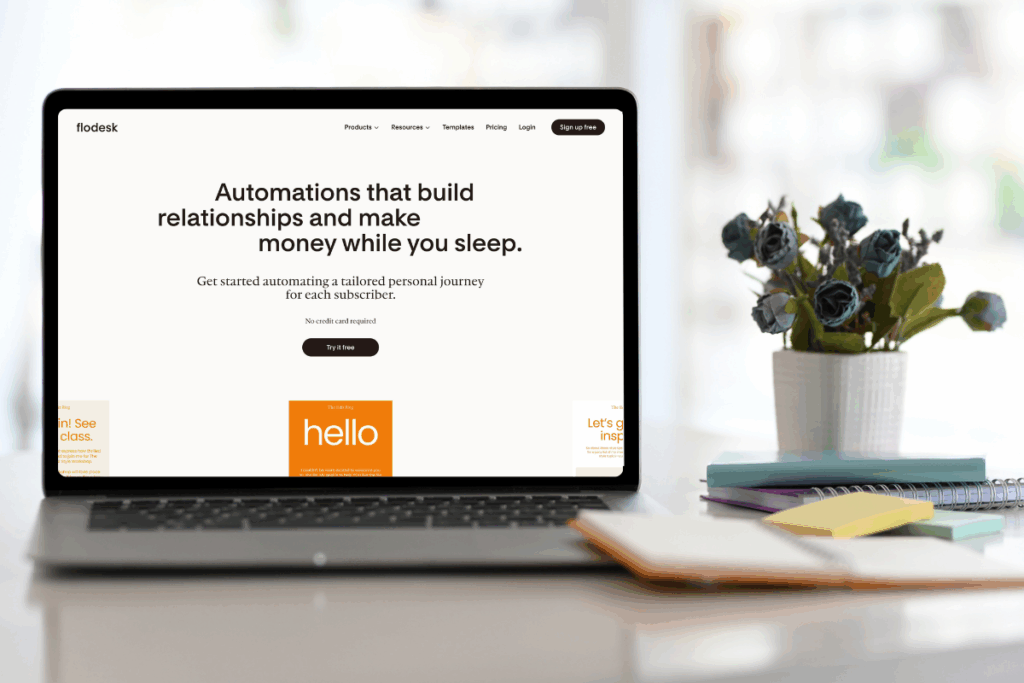
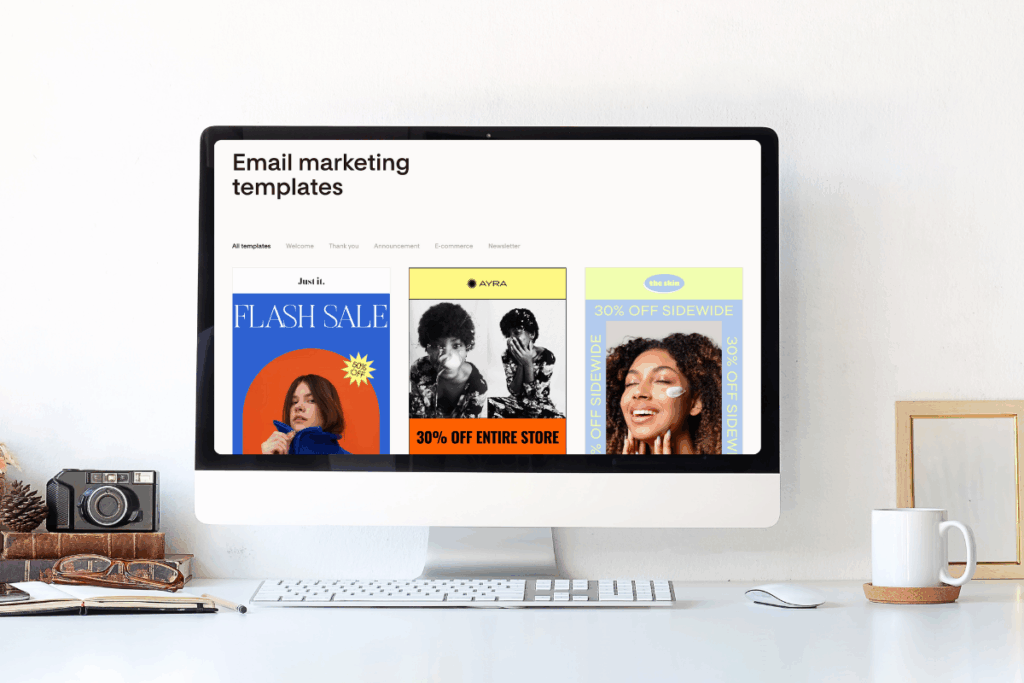
About pricing: as of the episode recording (early October 2025), Flodesk still offered a flat-rate model with options for email-only or email + checkout. They’ve announced a shift to subscriber-tiered pricing starting late November 2025. If you’re planning to build your list in the new year, locking in earlier can help. I’ll keep the exact date and details updated in the show notes so you have the current info.
Subject line and preview line swipe prompts
- Curiosity: “The one thing couples forget before booking”
- Outcome: “How our couples cut planning stress in half”
- Time anchor: “Two months before your date, do this first”
- Numbers: “3 things I wish every couple knew about timelines”
Preview text should say exactly what is inside. Keep it honest and specific.
Design tips that increase opens and clicks
- Subject lines: short, concrete, and a touch of curiosity. Emojis are welcome if they’re on-brand.
- Preview text: be literal and useful. Set the expectation for what’s inside.
- Layout: think like a website—headline, short paragraphs, generous spacing, scannable subheads, and clear buttons.
- Mobile first: if it’s easy to read and tap on your phone, you’ve already won.
- Buttons that say the thing: “Book a call,” “Inquire now,” “Download the budget calculator.”
When to send
We typically send mid-week mornings in the reader’s time zone. Your timing should reflect your market.
If your couples work 9–5, try hitting inboxes right before or right after the workday.
Test a few options, then pick one and be consistent.
How to keep your list healthy
- Regularly clean subscribers who haven’t opened in 6–12 months.
- Send a “Still want to hear from me?” email once a quarter.
- Segment your audience based on service, location, or stage of planning.
- Keep deliverability high by using your business domain, not Gmail.
- Encourage replies—it helps your emails stay out of spam folders.
Seasonal content ideas for wedding pros
- Winter: “What to plan during engagement season” or “Vendor booking checklist for early planners.”
- Spring: “How to prep your wedding timeline for daylight savings.”
- Summer: “Beat the heat: outdoor ceremony tips that guests will love.”
- Fall: “The final 90-day wedding countdown checklist.”
- Year-round: “5 ways to stay stress-free during planning season.”
Small business-friendly workflows for email consistency
- Batch write 2–3 emails at a time so you’re not rushing weekly.
- Repurpose Instagram captions into newsletter intros.
- Create one evergreen welcome sequence, then refresh it each season.
- Build reusable sections in Flodesk (like your footer, logo, and CTA).
- Set a recurring reminder in your project management tool to review analytics monthly.
Tips for handing email marketing off to a VA
- Create a shared Google Doc with story ideas, client milestones, and links to past posts.
- Provide a Flodesk login with limited access and clear folder structure.
- Record a quick Loom video showing how to schedule, preview, and test emails.
- Outline your preferred tone and common CTA phrases (“Book a call,” “Inquire now,” “See the gallery”).
- Ask your VA to track performance and suggest content ideas based on open and click trends.
Flodesk features that make it easy for creatives
- Drag-and-drop blocks that look professional without coding.
- Brand font uploads and color presets for cohesive visuals.
- Built-in checkout pages for selling guides, workshops, or small offers.
- Automation tools for birthday emails, inquiries, and follow-ups.
- Seamless integrations with Showit, Instagram, and your website forms.
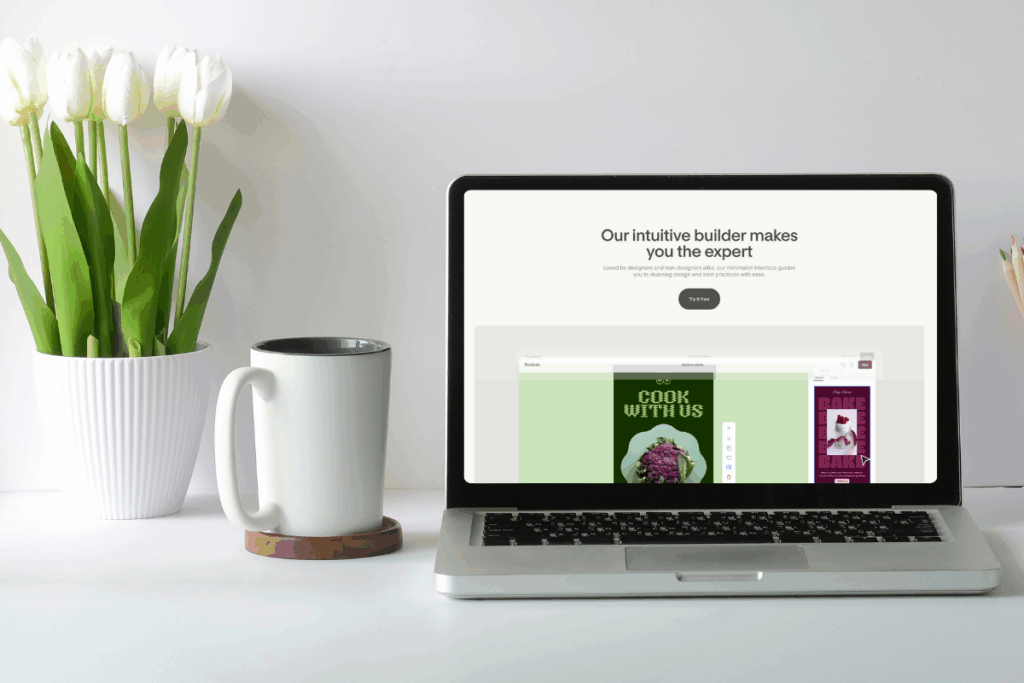
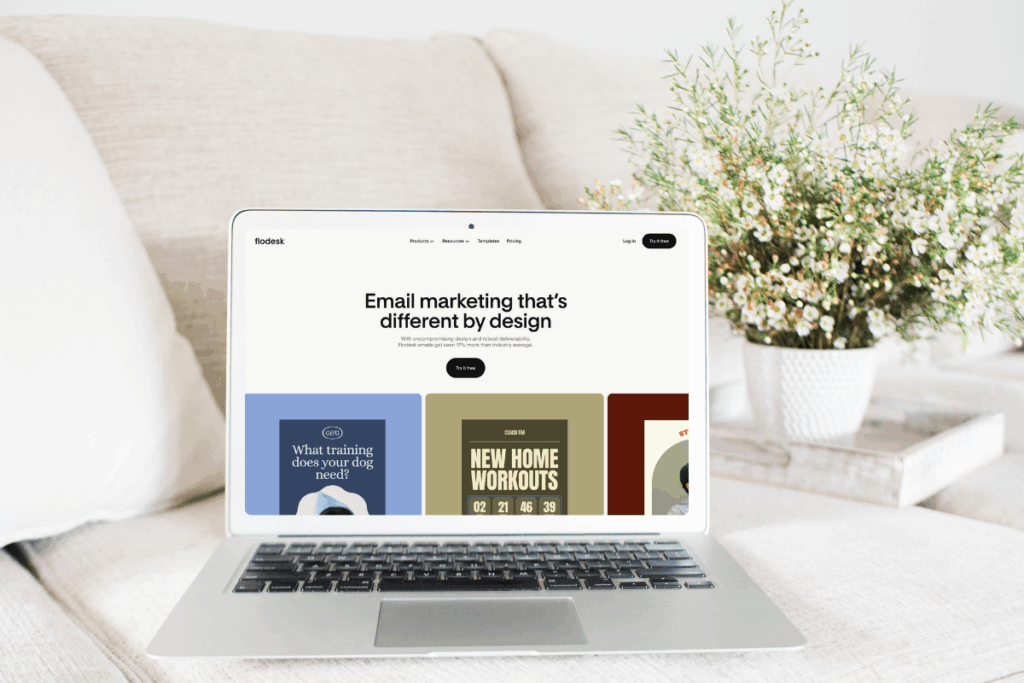
Pricing note and affiliate disclosure
Flodesk’s pricing is scheduled to shift from flat-rate to tiered by subscriber count around late November 2025.
If you want to lock in legacy pricing, move sooner rather than later.
I’ll keep the exact date and any perks updated here with my link and code so you can get the best available offer at the time you read this.
If you sign up with my code, you’ll receive a discount on your first month or year, and I receive a small commission.
This post isn’t sponsored—Flodesk has simply been the most user-friendly fit for our clients and my own studio.
Quick-start checklist
- Choose your platform and set up brand styles and a reusable email template
- Create one strong opt-in that attracts the right couples
- Map a short welcome sequence (2–5 emails) that introduces your process, showcases real work, and invites a next step
- Repurpose one existing blog or caption into this week’s newsletter
- Add a clear CTA to every send
- Block 60 minutes a week for email: plan, repurpose, schedule
Need us to set it up for you?
My studio can design your lead magnet, build your welcome workflow, and create a month of newsletters so you’re never starting from scratch.
If you’d rather DIY with guidance, hand your VA this post and have them build the workflow above.
Leave a Reply Cancel reply
We respect your privacy.
Copyright Emily Foster Creative, LLC. 2021 - 2025. All rights reserved.
hello@emilyfostercreative.com
Brand photography by Lena Crocker Photo, Ciara Corin Photo, Moon & Honey Photography and Enliven Photography
Powered by podcasts and tea.
Designing out of Portland, Oregon for creatives around the world.
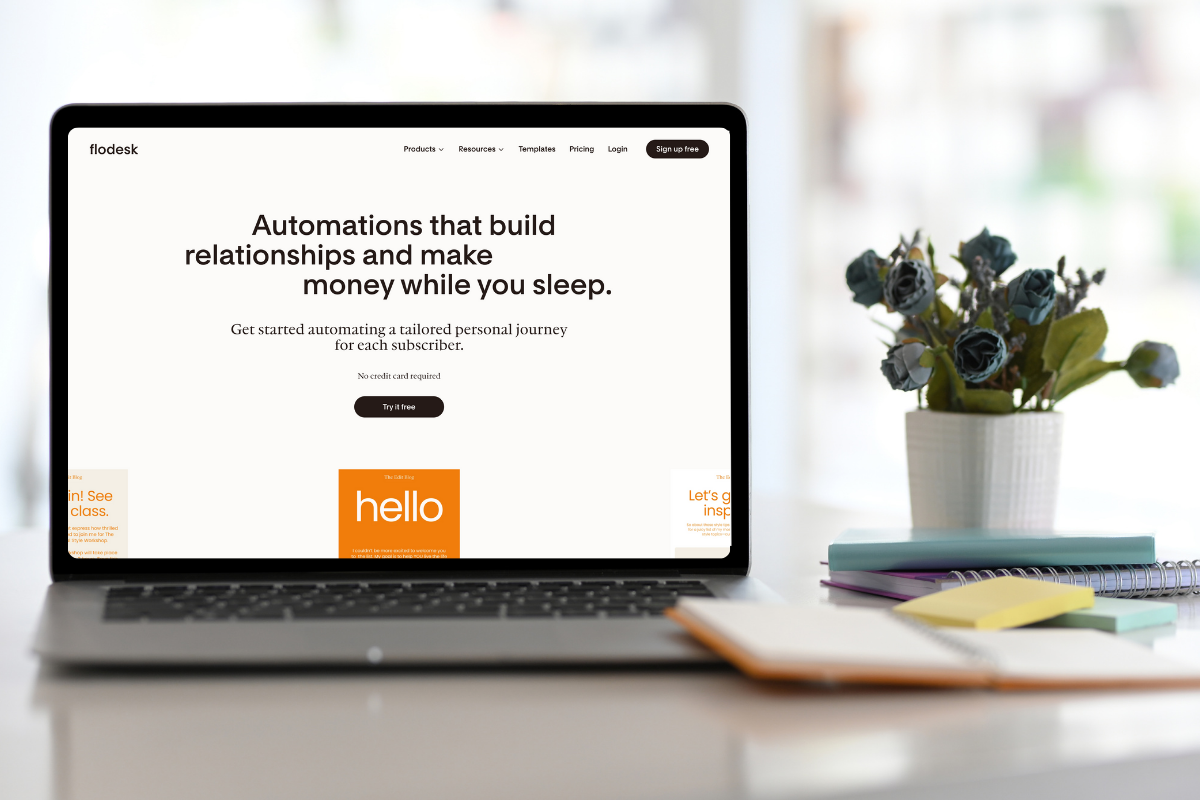
Be the first to comment